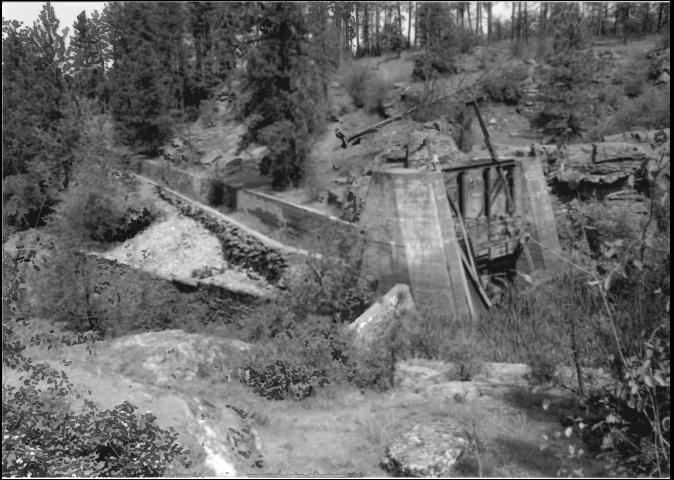Spokane Valley Land & Water Company Canal 1907
The National Register of Historic Places has documented the Spokane Valley Land and Water Company Canal. The canal has also been known as the Spokane River Canal and Corbin Ditch. This is an historic example of regional collaboration which may provide guidance for bi-state water collaboration.

NRHP Summary: The canal and headgates from the main Spokane Valley Land and Water Company canal are locally significant because they are associated with the early agricultural history of the area. They represent a local manifestation of the irrigation excitement that stimulated growth in the arid, western United States in the early 1900s. Construction of the canal system, starting in 1907, encouraged the development of small scale farming in the rural area of eastern Washington between the Idaho border and the city of Spokane. The water irrigated thousands of acres and contributed significantly to the development of the Spokane Valley. The initial segment of the canal, from the intake through the waste way, was constructed by at least 1889, when it carried water to power a nearby flour mill. There was a headgate in this sectrion by at least 1904. The remainder of the system was built when the company developed its water rights and pushed through plans for a large irrigation system. The two original headgates remain, along with the waste way and approximately two-and-one-half miles of canal. That is all that is left of a much larger system that once included over thirty-four miles of canals, with many more miles of lateral ditches. The remaining portions of the canal are significant because they represent an early form of irrigation that has since been replaced with pumping from deep wells. Such irrigation canals, common in many parts of the arid West, are rare in northern Idaho.
